Condensing time: I came up with this as the term to describe my new modus operandi, meaning to put more time than just one sixtieth of a second into a photograph. This post also continues my little series about agricultural landscapes. Once again I fled the crammed city to rove about the countryside. In contrast to my previous posts dealing with the same type of environment, I relied on color film this time.
Introduction
So, this time it’s different. When I’m usually writing a piece for this blog, I have taken some photographs beforehand. Photographs that I’m proud of in a way that are meaningful to me, photographs accompanied by stories I would like to tell. For this article, these photographs don’t exist – yet: While I’m typing these lines, the images still live inside my head (and some of them are already exposed on a roll of film lying in the bottom drawer of my fridge). As you are now able to read this and see some illustrations between the paragraphs, my photographs fortunately must have turned out well.
The Pinhole Idea: Condensing Time
The idea formed inside my head when I recently came across some pinhole photographs at Instagram. With their softness and dark corners, these images are the antithesis of a “technical good photograph”. Yet do pinhole images evoke so many emotions. And I observed another quirk that striked me: the condensed time. Let me explain. Pinhole cameras usually apply a very narrow opening – the pinhole. Often, it equals f-numbers around 170. This means, for a given moment only a tiny bit of light enters the hole and finds its way to the film plane. Even in bright daylight, a pinhole photograph requires several seconds if not minutes to get properly exposed. This heavily affects how moving objects will be rendered in your image! A fast driving car? Won’t appear at all. Passing clouds? Should be smeared. Raging waves? Perfectly smoothed.
(Day) Dreaming me into an Impressionist Landscape
On a rainy weekend, I sat in my armchair and fantasized about the manifold possibilities a pinhole camera would offer me. I wrote down some notes and collected all types of movements in my environment – how would they probably look like in a photo? In conclusion, wide landscapes with lots of sky should offer me some interesting opportunities. My inner eye saw impressionist paintings: not a true representation of a landscape, but the feeling of it. The impressionists used rather short and thick brush strokes to emphasize the essence of their subjects. Precise contours carving out the details were less important. (I suppose the attribute “painterly quality” is one of the most desired ones in contemporary amateur photography, right behind the “cinematic feel”.)
Think of the following situation: You live in an emerging city in the early 19th century. On a Sunday, you take the train and escape from the bleak backyards and smoking chimneys. You wander through the forest, meadows and acres, with the sun high in the sky above you. After some hours, you feel tired and decide to rest a bit at the roadside. You lay down and gaze over the landscape. As you do so, your thoughts quickly drift away. – This is exactly the kind of mood I wanted to express with my intended photographs.
The Pinhole Idea Turns into Another One
With the task set, I invested some time in researching pinhole cameras. Okay, I know there are plenty of options to build one entirely yourself. However, I was rather looking for the fun in creating images, not the fun in creating a camera. Among the commercial options, I stumbled across a small-ish company, which sells nicely crafted wooden cameras. They offered a lot of different options from 35mm up to (very) large format pinholes. After browsing the company’s line-up for quite some time, I could narrow down the selection for my project: I would go for 120 film rather than 35mm, and would prefer a larger format over a smaller one. In the end, I landed at the 6×12 panoramic camera, which even came in a version with perspective correction!
Condensing Time via Sunglasses for my Camera
Over time, doubts arose. The company appeared very likeable to me, a small business I would happily support. And the camera is made of renewable resources, it should last for decades – so what’s the matter? Problem is, there are already lots of cameras occupying my drawer. (As you’re reading this site, I guess you know what I’m talking about.) Buying a newly built one – even if it is environmentally friendly as it gets – seemed not strictly necessary to me. So, could I adapt an existing option for the new idea? During the last summer, I had a lot of fun with the 6×9 medium format Fujica GSW, which I used to document agricultural landscapes in my area. I figured out that with a slow film, a small aperture and a strong ND filter I could reach the desired long exposure times. My idea of condensing time continued to take shape.
At that time I didn’t own a strong ND filter, so I had to purchase one first – I chose an ND 1000. As the name suggests, it extends exposure times by the factor of 1000. If your meter reads 1/1000 of a second, the filter turns this into a full second. 1/125s transforms into 8 seconds, 1/10s will result in almost two minutes. You get the idea.
Out in the Fields, Again
Like in the previous year, I rode my bicycle to discover the countryside. I pretty much enjoyed this slow pace, it allowed me to carefully experience the landscape. My goal was not to cover as many miles as possible, nor to collect countless images. Indeed, I really wanted to be like that impressionist painter, working en plein air.
Once I came across a row of poplars. A natural wall separating two fields, that I could already see from miles away. While I was setting up the camera, a large cloud slid in, shading the trees. Bad timing, as I liked the fully lit scene way better. So I waited for the cloud to pass. The wind seemed to push it diagonally – there were a few brief moments when the sun peeped through the cloud’s edge, only to disappear again seconds later. It turned into a competition with myself, as I didn’t want to give up. In the end, I waited for almost half an hour, with another five minutes for the exposure itself. See: For condensing time, you have to invest time. Interestingly, my initial impatience waned over time. Even though I felt a relief when finally the shutter clicked, I already regretted this episode being over.
To carry the camera and tripod is rather cumbersome. When I stop at a promising scene, it takes me some minutes to unpack, assemble the equipment and find the right spot. A roll of 120 film only provides eight frames in 6×9. This results in a rather deliberate approach – with the risk of overthinking it and not taking a picture at all. Therefore, I also take along a point-and-shoot camera. It allows me to take some casual snaps, which nicely complement the precious 120 frames.
Some Images
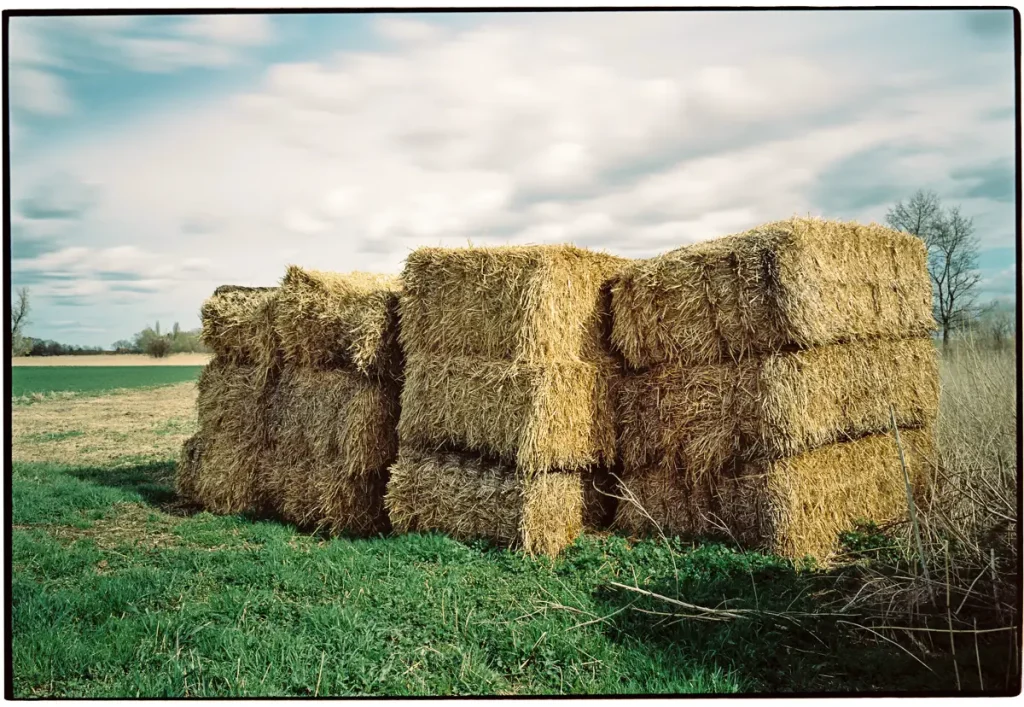
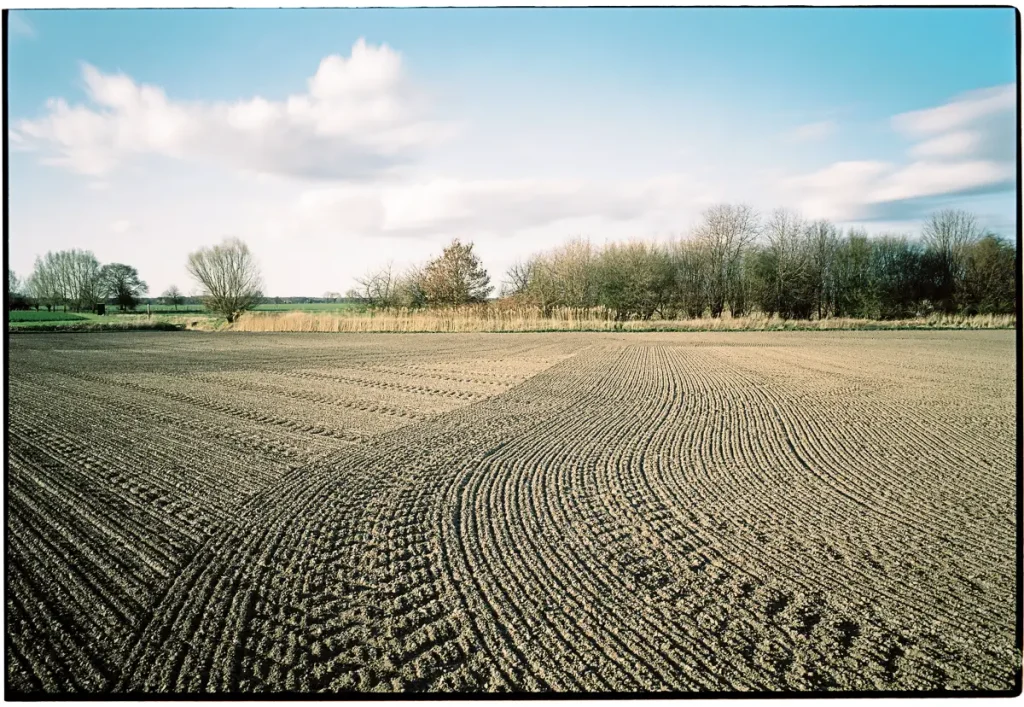
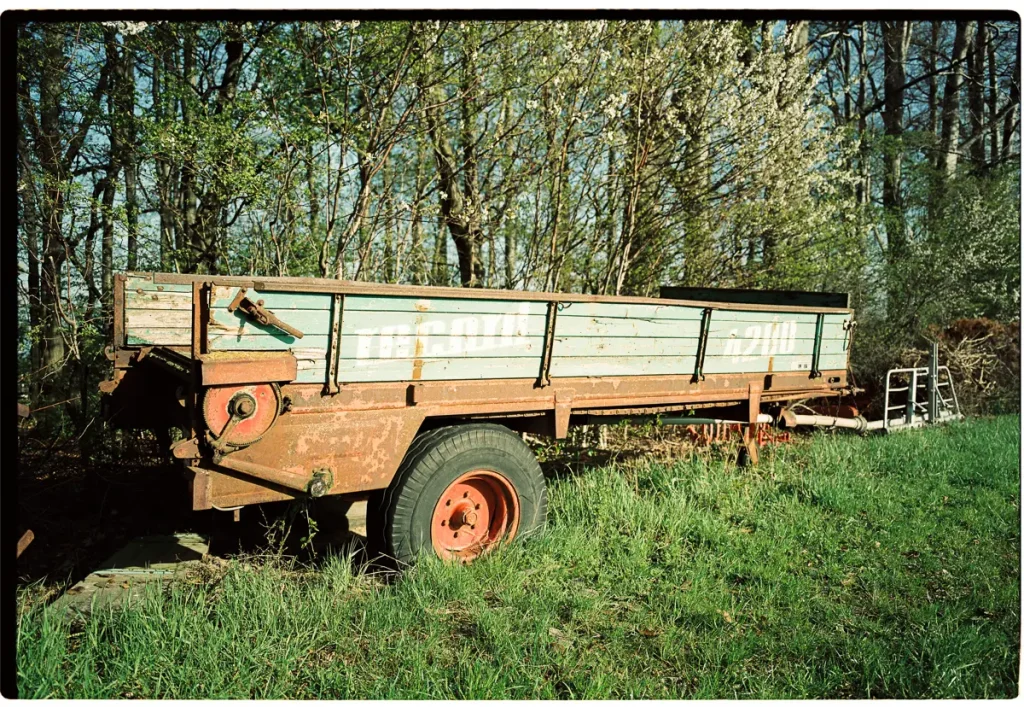
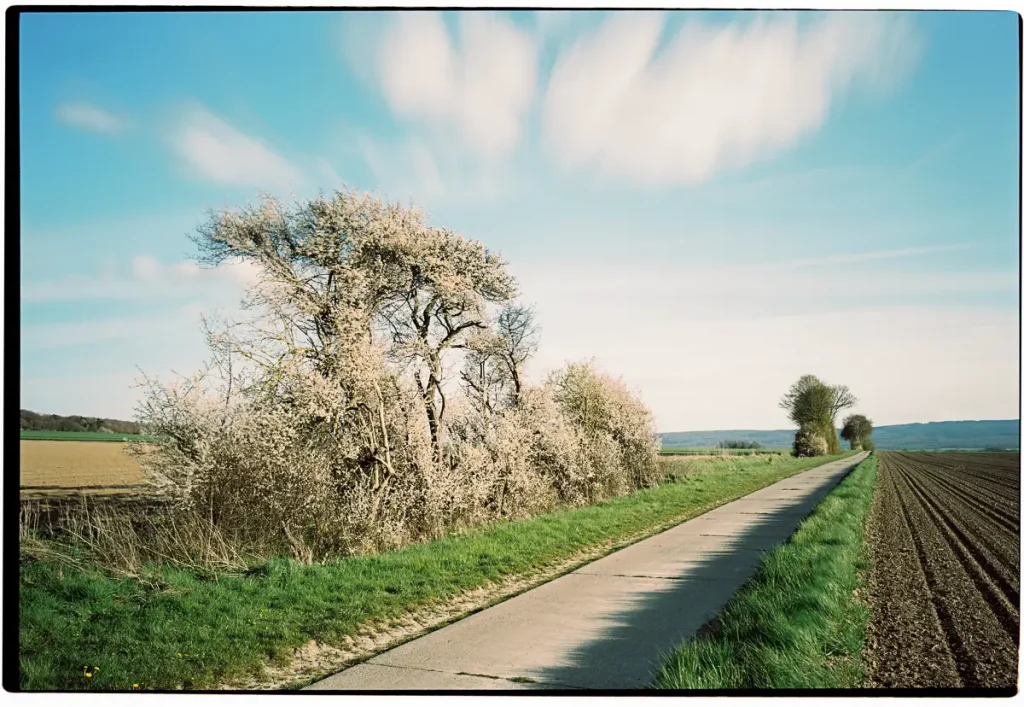
Struggling in Creativity
Due to Covid, I spent a lot of time at home. I would go even that far and say, I have never spent that much time in a confined space before in my whole life. With most of the outside activities hibernating, there’s lots of time to contemplate other people’s work. On most days, I spend hours reading blog posts, watching YouTube videos or flipping through photo books. In doing so, I often experience moments in which I feel deeply inspired. I’m amazed how others work with colors, employ geometry or use a certain lighting mood to convey their message and their feelings. In these moments, a diffuse urge to create arises in me.
Unfortunately, these moments are often rather short-lived. Like a shovel full of sand that is running through my fingers: there is so much raw material, yet I’m unable to grab it let alone build something with a clear shape from it. In the blink of an eye, all the sand is gone – leaving me behind with the bitter feeling of a missed opportunity. The bitterness then gives way to a dull emptiness.
I’m always happy if I manage to go out and shoot before my mood shifts – or if I go out despite the feeling of emptiness. In the latter case, a new – or newly seen – environment can stimulate creativity and thus overcome the barrier. A visual kick and the machine is running again. However, I remember some trips where I tried hard to force creativity – too hard, actually. This doesn’t work at all, it just increases the frustration. Serenity is the key, I know, I know – though at times difficult to maintain.
You’re not Alone: Kyle McDougall’s Discovery
I recently saw a video from Kyle McDougall, which strongly resonated with me. Last year, Kyle moved from Canada to the UK. In his new environment, he was faced with a lack of motivation in terms of photography. Although Kyle had been out exploring here and there, the spark hasn’t jumped over yet. In this video, he reports on a strong inspiration he had just experienced: While driving through the countryside at dusk, Kyle realized how appealing the roadsides appeared when lit only by his car’s headlights. A familiar sight, portrayed in a surreal, mysterious manner. This discovery freed him from the pressure to create great new stuff. Kyle just let go and played around, with no expectations. His video is a plea to stay curious and open-minded, while avoiding the trap to force things.
Yeah, I know the power these moments of inspiration possess. It’s such a great feeling of happiness, such a strong driving force. These moments don’t happen too often and they are not easy to foresee (if any). However, they exist – sooner or later I will experience one of them. I think this is what keeps us going.
So when you will have finished this article, please head over to YouTube and watch Kyle’s video!
New Inspiration from no one less than Claude Monet
I’m fascinated by Claude Monet’s series of haystacks; to learn about these paintings gave me an instant boost for my project. So, what’s it all about? At the age of 42, the French painter moved to the small village of Giverny, located in the Normandy region. In his rural neighborhood, he came across haystacks on the fields of a nearby farmer. Such stacks were common these days as they allowed the harvested wheat to dry before threshing. (Strictly speaking, they weren’t haystacks – though hay was sometimes used to protect the wheat underneath.) It could take a lot of time until the threshing was done, making the stacks a common sight almost throughout the whole year.
A rather mundane subject – however, Monet wasn’t interested in the haystacks per se. He rather studied how the light and the seasons interacted with the stacks. Monet painted them in the morning, he painted them around noon and he painted them at sunset. Haystacks in the summer sun, haystacks covered with snow. In the end, Monet had collected 25 versions of this very subject, all painted in less than a year.
Unfortunately, you won’t find these haystacks today. The modern combine harvester rendered them useless. But there’s something similar and almost equally interesting for me: stacks of straw bales. Whenever I encounter one of them, I have to take a picture of it. With a bit of luck, they can still be seen in the winter or even in spring. Naturally so to speak, straw bales are an important part of my condensing time series.
Condensing Time in a Broader Sense
As I was writing this peace, I came to understand my concept of condensing time in a broader sense. At first, I used this term to put a rather short amount of time – two or five minutes – into one frame. Now I see it also as a longer time period – the spring of 2021 – put into several frames. This is the reason why I decided to include other images to this project, the ones taken without a grey filter and also the casual point-and-shoot snaps I mentioned earlier. These together will form my memory of this phase of uncertainty and hope, as the Covid pandemic intensifies while the vaccination process makes considerable progress. My bike trips help as weekly escapes from this situation, and from the narrowness of my apartment.
More Images
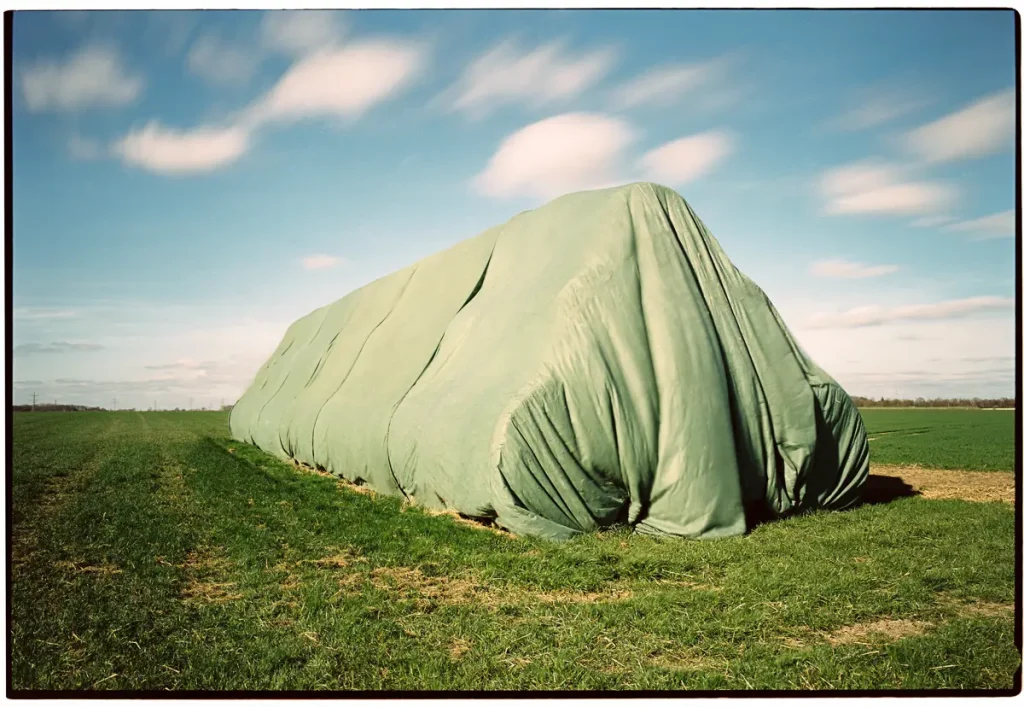
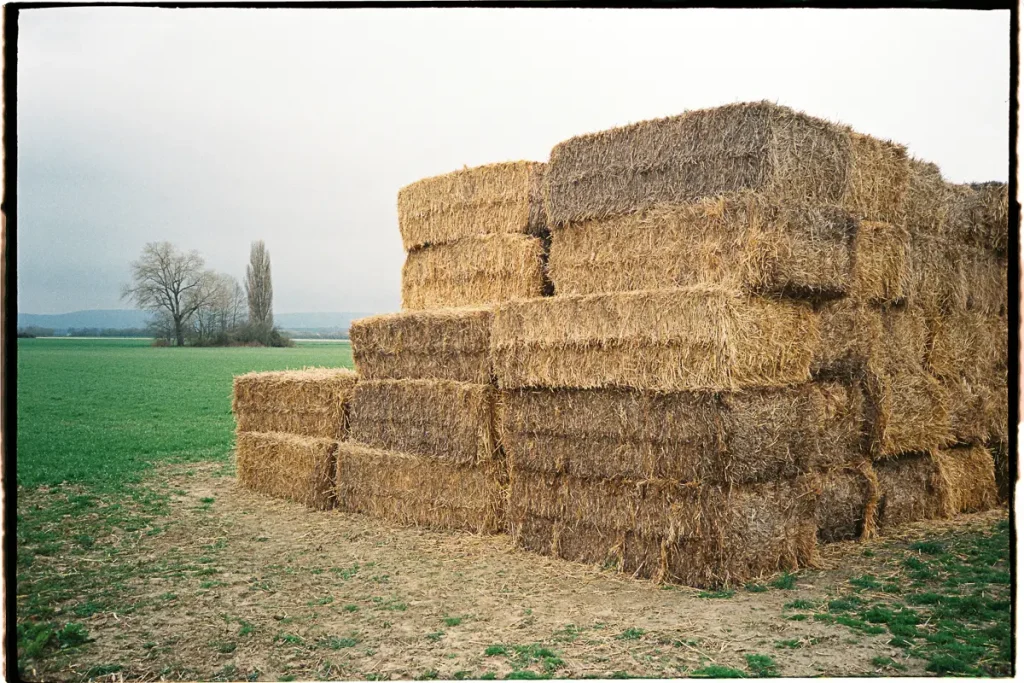
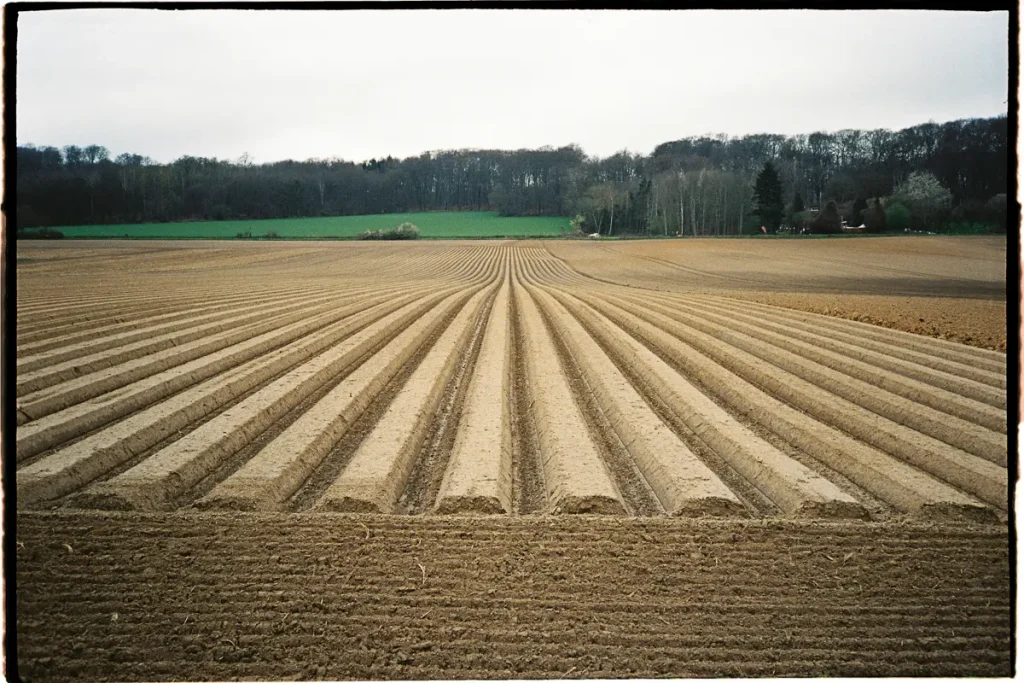
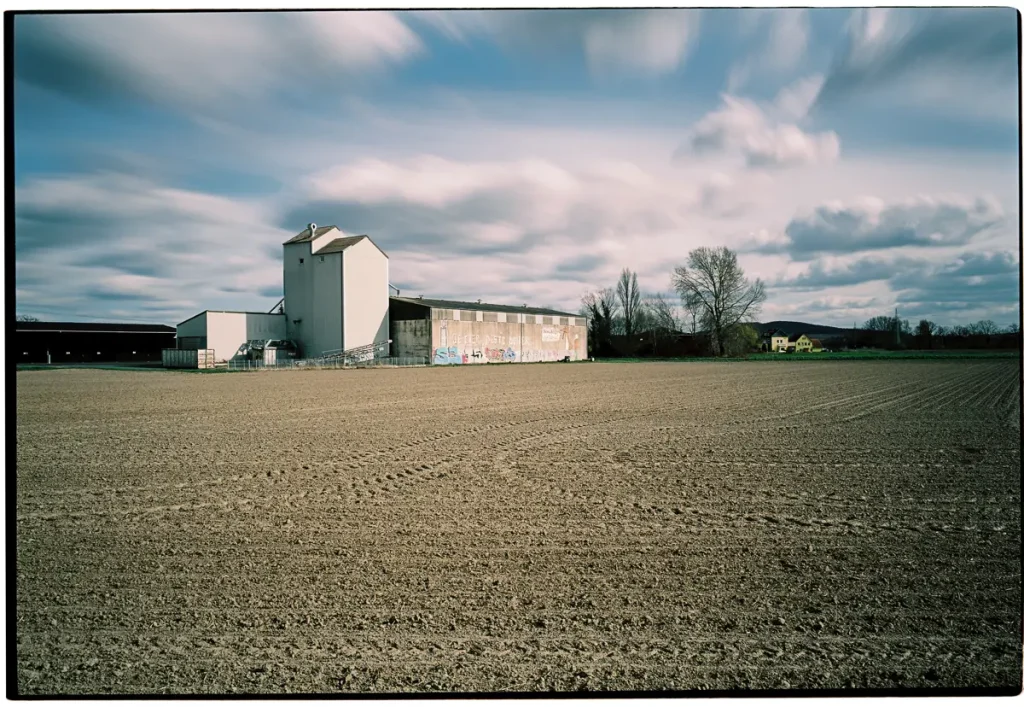
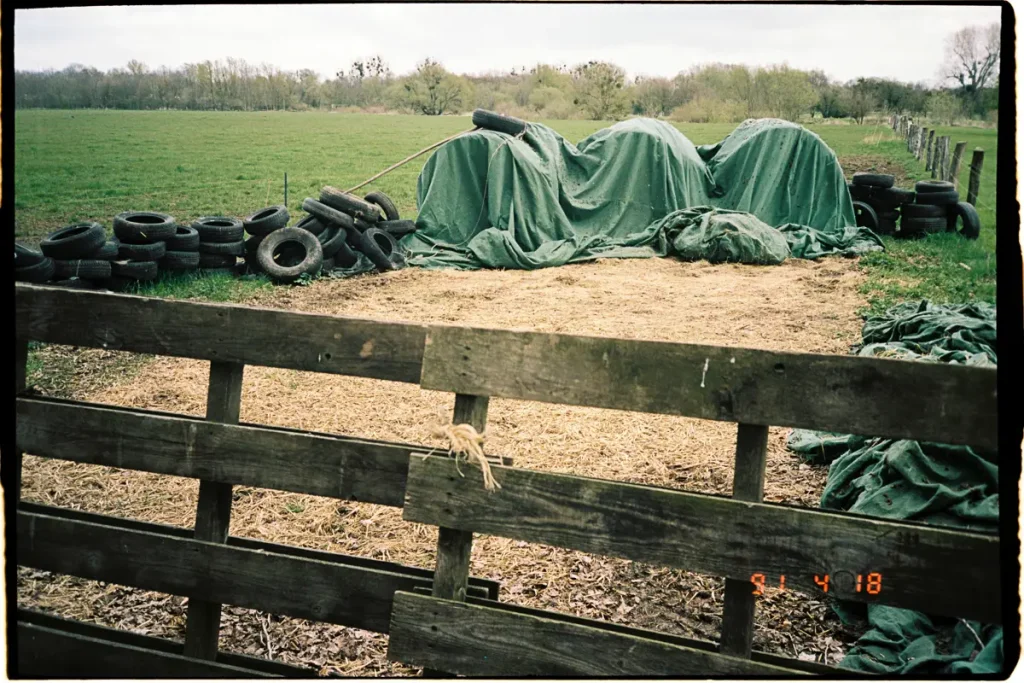
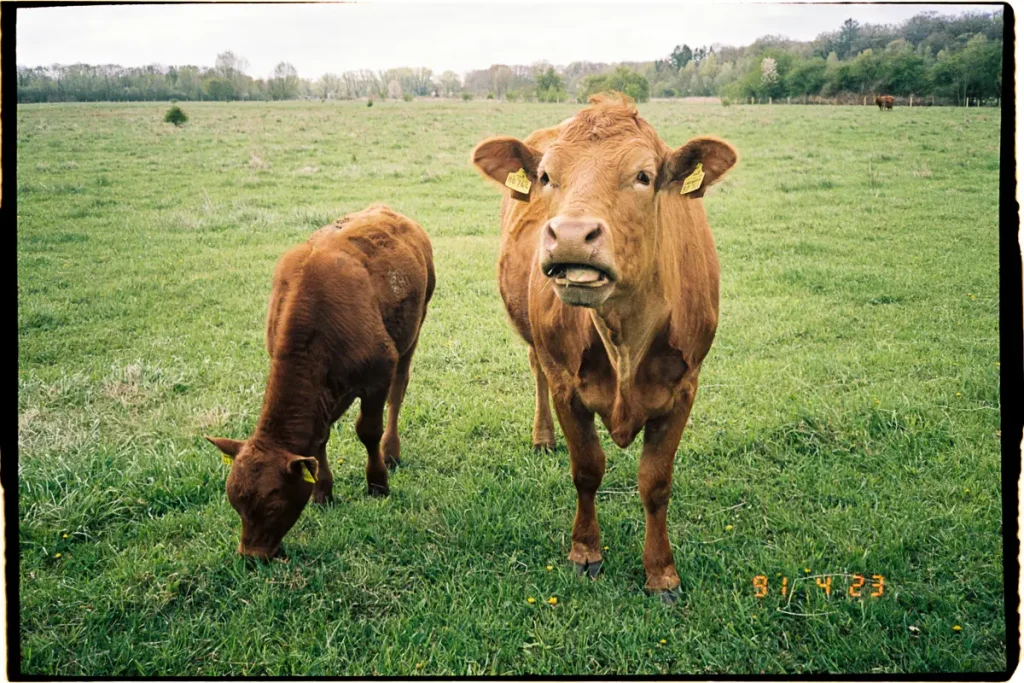
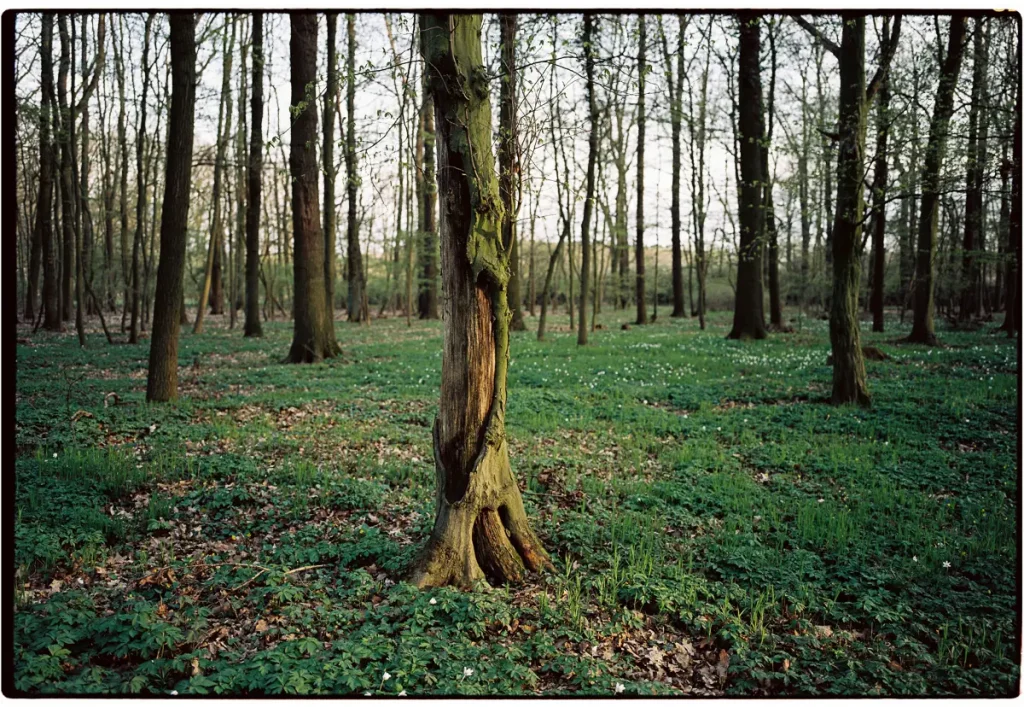
All images were processed by Carmencita Film Lab in Spain. On request they scan the negatives including the black frame borders. I pretty much like this option as it increases the authenticity and individuality of the photographs to me.
Closing Thoughts on my Condensing Time Series
Remember the beginning, when I said I hadn’t had a look at images yet? Well, now I’ve had it. When I saw the first results from my lab, I had mixed feelings. First and foremost I felt happy that everything had gone so well: The new filter with unknown characteristics, long expired film, reciprocity failure – these are all sources for potential failures. Luckily, my images turned out well exposed and sharp. However, the desired effect of condensing time varied between the individual frames. In some images, the moving clouds had a strong impact on me. In other images, the effect turned out way more subtle. For example, blades of grass, blown by the wind? Almost unnoticeable. I came to the conclusion that I liked images with a prominent and interesting sky the most.
I think this a great outcome for my current project, or more precisely: a great interim goal. Now I am at the point where I can clearly see the potential in an approach. And feel motivated to refine it. It’s good to have left some road to travel – because in photography, the fun is (mostly) more in the process than in the final results.
Thanks for reading!
PS: You can read my other posts on the agricultural landscapes topic here: agricultural landscapes part I and part II.
Share this post:
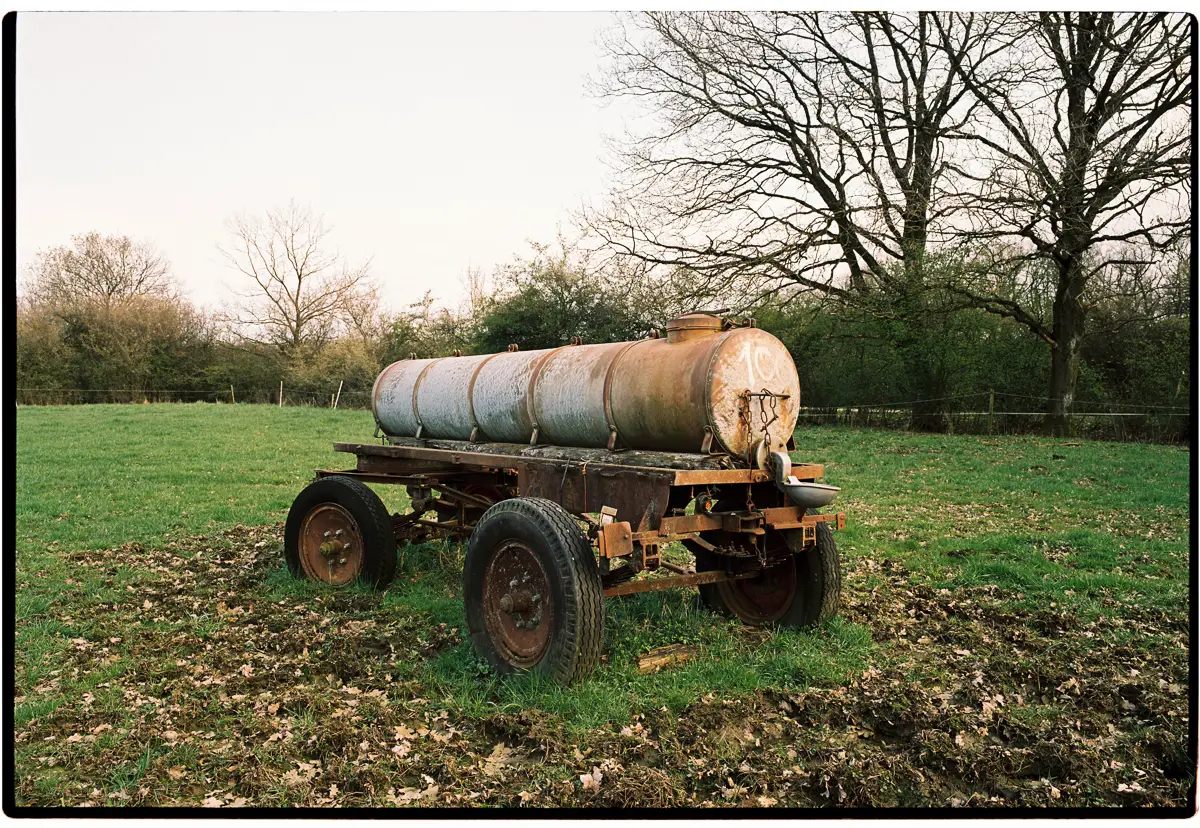








Comments
Graeme on Condensing Time – by Christian Schroeder
Comment posted: 01/07/2021
Comment posted: 01/07/2021
Bill Brown on Condensing Time – by Christian Schroeder
Comment posted: 01/07/2021
I would like to suggest you try to shoot with a Noblex medium format panoramic camera. A friend let me borrow his and a feature of this camera is the ability to shoot as many exposures as desired on a single frame of film. The effect is intoxicating and the look is difficult to achieve any other way.
Anyway, enjoyed the article as always.
Comment posted: 01/07/2021
Comment posted: 01/07/2021
Peter Grey on Condensing Time – by Christian Schroeder
Comment posted: 01/07/2021
Comment posted: 01/07/2021
Alexander Seidler on Condensing Time – by Christian Schroeder
Comment posted: 02/07/2021
Time was visible for me, not only because of the clouds,
Comment posted: 02/07/2021
Dan Castelli on Condensing Time – by Christian Schroeder
Comment posted: 05/07/2021
I wish you good luck as you continue this series and look forward to fresh images.
Dan
Comment posted: 05/07/2021